Great Places to Retire Early Near the Beach
Lazing about the beach is a common retirement dream, but expensive oceanfront housing costs are often a big wake-up call.


Lazing about the beach is a common retirement dream, but expensive oceanfront housing costs are often a big wake-up call. Then again, America is filled with great beachfront destinations from sea to shining sea and all the places in between. Far from the coasts, you can find desirable metro areas that offer access to freshwater beaches on lakes and rivers, so you still get to feel the sun on your face and the sand between your toes, but often at more affordable prices than you'll encounter in popular coastal retirement cities.
We pinpointed great places for early retirement in each state, taking into account living costs, median incomes and poverty rates for residents ages 45 to 64, as well as local labor markets (in case you want to keep hustling in one way or another in your early retirement) and tax situations. Of our 50 picks, 28 great places to retire across the U.S. offer the added benefit of nearby beaches, within a 30-minute drive, where you can swim and bum around. The mix of beach-adjacent early retirement destinations is sure to surprise you.
The list is ordered alphabetically by state. See "How We Picked the Best Places for Early Retirement" at the end of the list for details on our data sources and methodology.

Juneau, Alaska
- Total population: 32,434
- Share of population, age 45 to 64: 29.3%
- Retired cost of living: 33.2% above national average
- Median income, age 45 to 64: $102,396
- State's retiree tax picture: Most Tax Friendly
- Popular local beaches: Eagle Beach, Auke Bay Recreational Area
If you crave adventure—and don't mind long winters and vast swaths of wilderness—it pays to live in Alaska. Literally. The state's oil wealth savings account gives all permanent residents an annual dividend: $1,600 per person in 2018. That's on top of the state's generous tax situation: Alaska has no state income tax or sales tax (although municipalities may levy a local sales tax), and it doesn't tax Social Security or other retirement benefits. No wonder Alaska ranks as the most tax-friendly state for retirees.
Still, seniors don't seem too interested in facing the Last Frontier. Only 10.1% of the entire state's population is age 65 and older, compared with 14.9% of the U.S. That leaves more room for younger residents—with 25.8% of the state being 45 to 64 years old and an even higher share of the capital city belonging to that age group—to take advantage of the state's financial benefits. Younger retirees might also enjoy all the local, natural benefits: Juneau offers endless outdoor activities, from kayaking to whale watching, as well as a charming downtown.
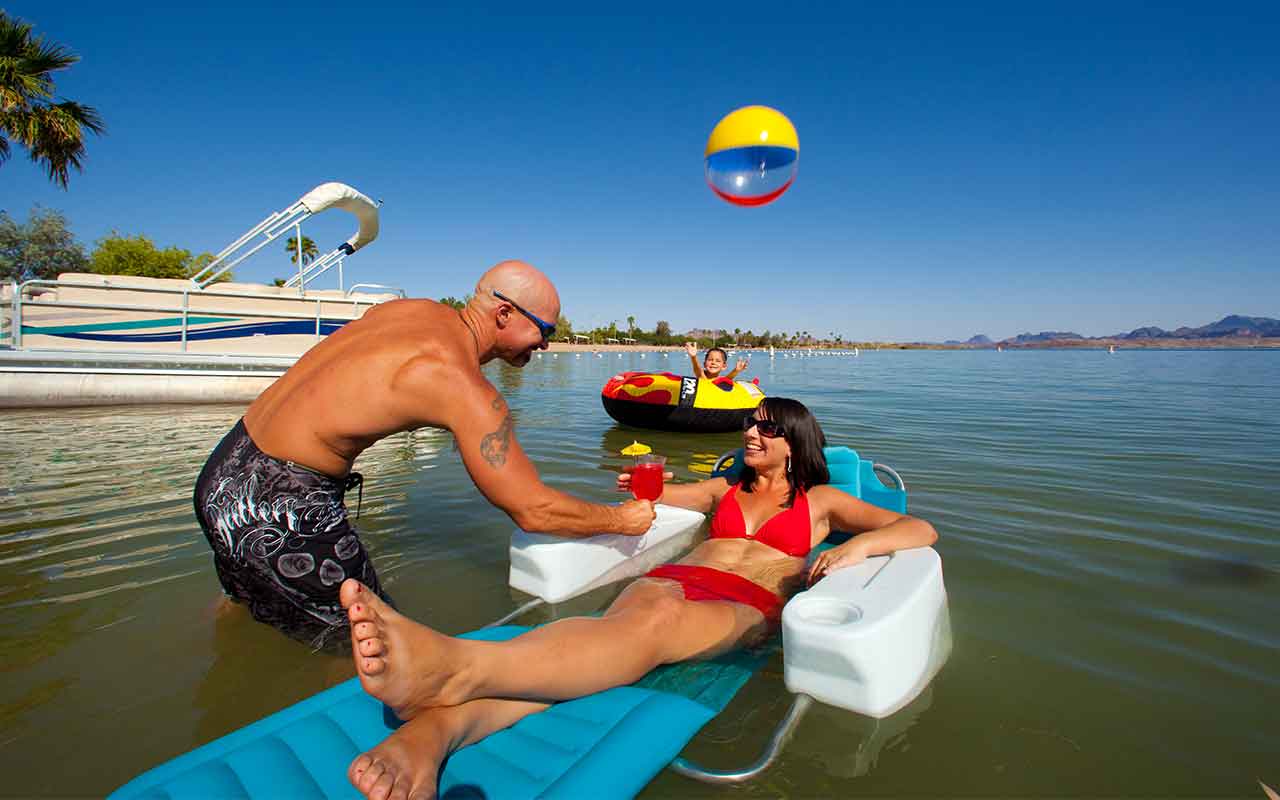
Lake Havasu City, Ariz.
- Total population: 204,691
- Share of population, age 45 to 64: 28.0%
- Retired cost of living: 0.2% below national average
- Median income, age 45 to 64: $44,328
- State's retiree tax picture: Mixed
- Popular local beaches: Lake Havasu State Park, London Bridge Beach, Rotary Community Park
Lake Havasu City, situated on the eastern shore of its namesake lake, is a popular destination for co-eds on spring break and snowbirds in the winter—a testament to its attractiveness for a wide age range, making it a great choice for early retirees. Indeed, for the whole year, the local median age is 50.4, compared with 37.8 for the U.S.
Being lake-adjacent, the area along the California border offers plenty of water-related recreation, including boating, fishing and swimming, as well as scuba diving and water skiing. But it's more than just fun and games: Kiplinger named Lake Havasu City one of 15 Satellite Cities Poised to Thrive. That's based on expanding regional business growth and a hot job market, so it offers a strong economic base should you decide to unretire in some form.

Hot Springs, Ark.
- Total population: 97,994
- Share of population, age 45 to 64: 27.1%
- Retired cost of living: 8.0% below national average
- Median income, age 45 to 64: $49,692
- State's retiree tax picture: Not Tax Friendly
- Popular local beaches: Balboa Beach, Cortez Beach, DeSoto Beach
You won’t need to travel far for rest and relaxation if you settle in this retirement hotspot. Surrounding the north end of the city of Hot Springs is Hot Springs National Park, which has 47 hot springs that come out of the mountain of the same name and bathhouses, where you can drink from fountains and soak in the water. The relaxing experience extends into the city proper, where you can find many spa and massage services to choose from. You can also unwind by golfing at one of the area's 11 championship courses or by fishing or boating on one of the three local lakes.
Even your wallet can de-stress. Housing, transportation and health care costs for retirees are particularly low, at 23.3%, 20.3% and 8.2% below the national average, respectively. The median home value in Hot Springs, about 60 miles southwest of Little Rock, is $114,700—far below the national median of $193,500, according to the U.S. Census Bureau.

San Francisco
- Total population: 4.6 million
- Share of population, age 45 to 64: 26.8%
- Retired cost of living: 83.3% above national average
- Median income, age 45 to 64: $105,396
- State's retiree tax picture: Mixed
- Popular local beaches: Baker Beach, China Beach, Fort Funston Beach
Yes, it's one of the most expensive cities in the U.S., second only to Manhattan and with living costs about double the national average for both retirees and the general population. But a slim silver lining: While the infamously high housing prices push up the overall measure of local living costs, other expenses are not nearly as bad. Indeed, Bay Area housing costs alone are a whopping 253.3% above the national average for retirees, but health care costs for the demographic are a more manageable 19.4% above the national average.
Plus, the main reason for the metro area's high costs—the burgeoning tech sector—is also a major attraction. It has driven rapid economic growth for years, helping to boost paychecks, create a hot job market and attract workers and businesses alike. So you should find plenty of opportunities to work in retirement if need be.
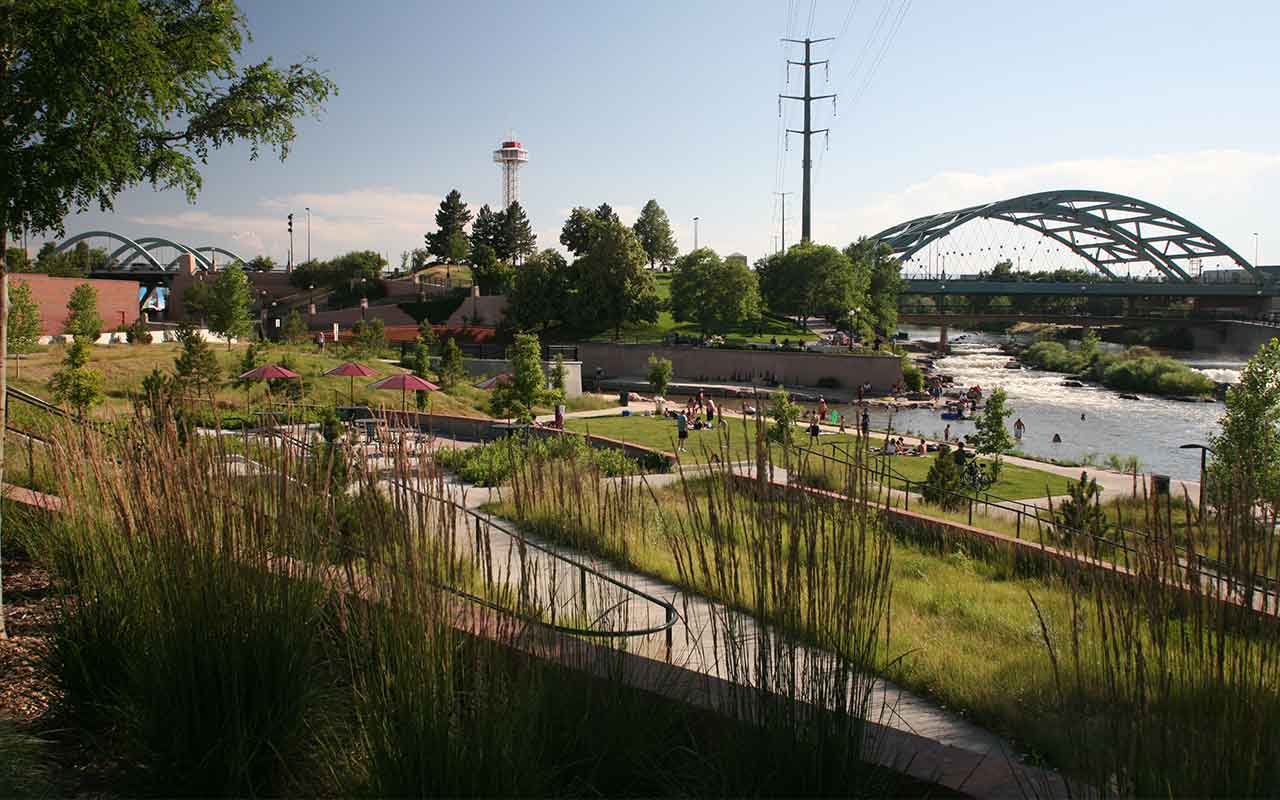
Denver
- Total population: 2.8 million
- Share of population, age 45 to 64: 25.7%
- Retired cost of living: 9.9% above national average
- Median income, age 45 to 64: $84,653
- State's retiree tax picture: Mixed
- Popular local beach: Confluence Park
Colorado places eighth in the United Health Foundation's overall health rankings and fourth in its senior health rankings, and Denver plays a healthy role in that rating. Indeed, the Milken Institute, a think tank, ranked the metro area the 12th best big city for successful aging in large part due to the population's healthy and active lifestyle.
Other strengths of the area include high employment and economic stability, which can be particularly desirable for early retirees who'd like to have the option to work again. For later on in your retirement, you may also appreciate Denver's quality infrastructure, with well-funded transit for older adults, highly rated nursing homes and ample continuing care.
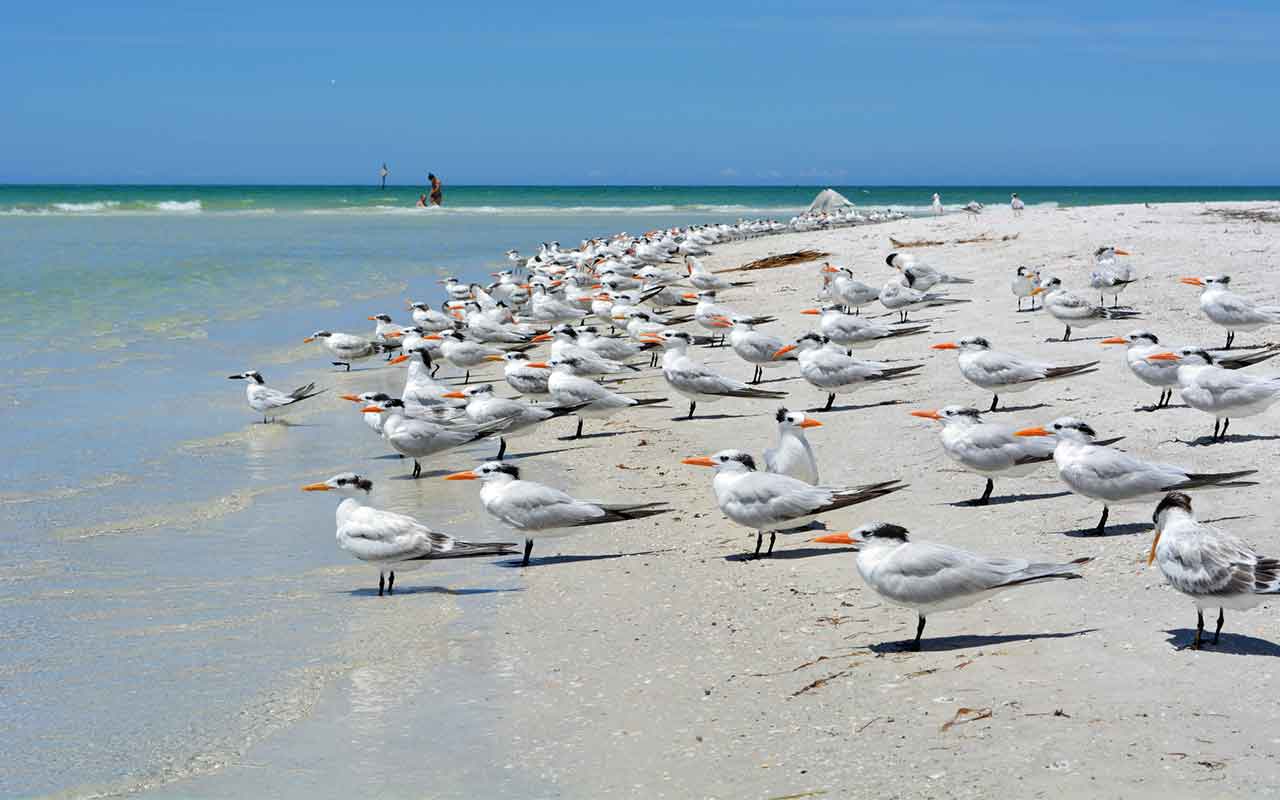
Tampa, Fla.
- Total population: 3.0 million
- Share of population, age 45 to 64: 27.3%
- Retired cost of living: 9.3% below national average
- Median income, age 45 to 64: $68,759
- State's retiree tax picture: Most Tax Friendly
- Popular local beaches: Clearwater Beach, Fort De Soto Park
You can find plenty of great places to retire in Florida, as the scores of resident retirees can tell you. But this area ranked best with us for young retirees, driven mainly by its particularly affordable living costs and younger-skewing population. Tampa is actually one of three major cities that make up the Tampa Bay area, which also includes St. Petersburg and Clearwater. The latter tends to be the most popular among seniors, with seniors making up 21.4% of the population, compared with just 17.7% in St. Petersburg and 12.2% in Tampa.
And of course, the entire area offers all the things you'd look for in a Florida retirement: white sand beaches, warm blue waters, plenty of golf and generous tax breaks.
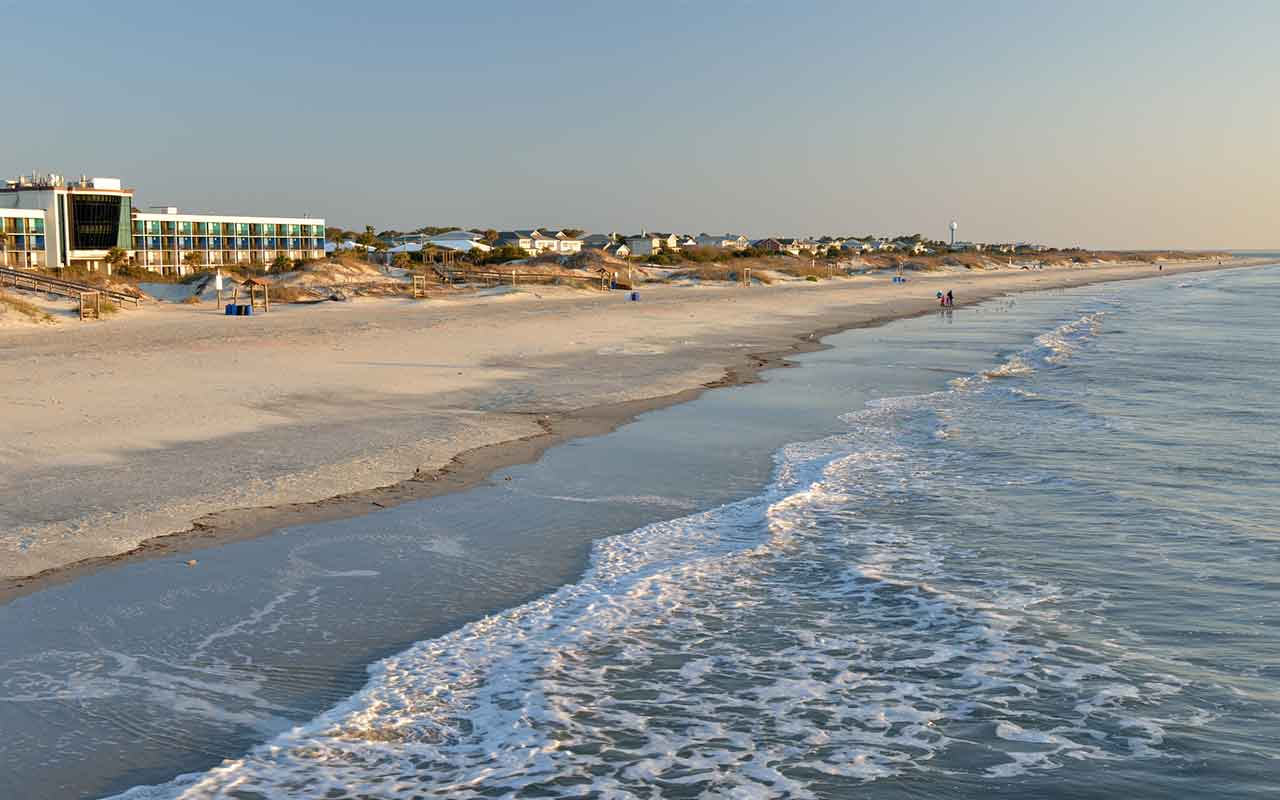
Savannah, Ga.
- Total population: 377,476
- Share of population, age 45 to 64: 24.0%
- Retired cost of living: 9.8% below national average
- Median income, age 45 to 64: $68,759
- State's retiree tax picture: Most Tax Friendly
- Popular local beach: Tybee Island
With its warm weather and low living costs, Georgia ranks third among our Best States for Retirement. And Savannah (city population: 145,862) is particularly peachy, especially for early retirees. Living costs among retired people are among the lowest in an already low-cost state. Yet incomes for 45- to 64-year-olds are among the most generous, albeit still below the national median. That should make it easier to stretch your savings through an extra-long retirement.
Amenity-wise, the historic Georgia city offers beautiful sights, just right for strolling through retirement, including classic American architecture, town squares and riverfront views. Tybee Island, with its wide beaches and still-operating lighthouse, is just a 20-minute drive east of the city. You can also enjoy an array of restaurants, museums and theaters, particularly in downtown Savannah.
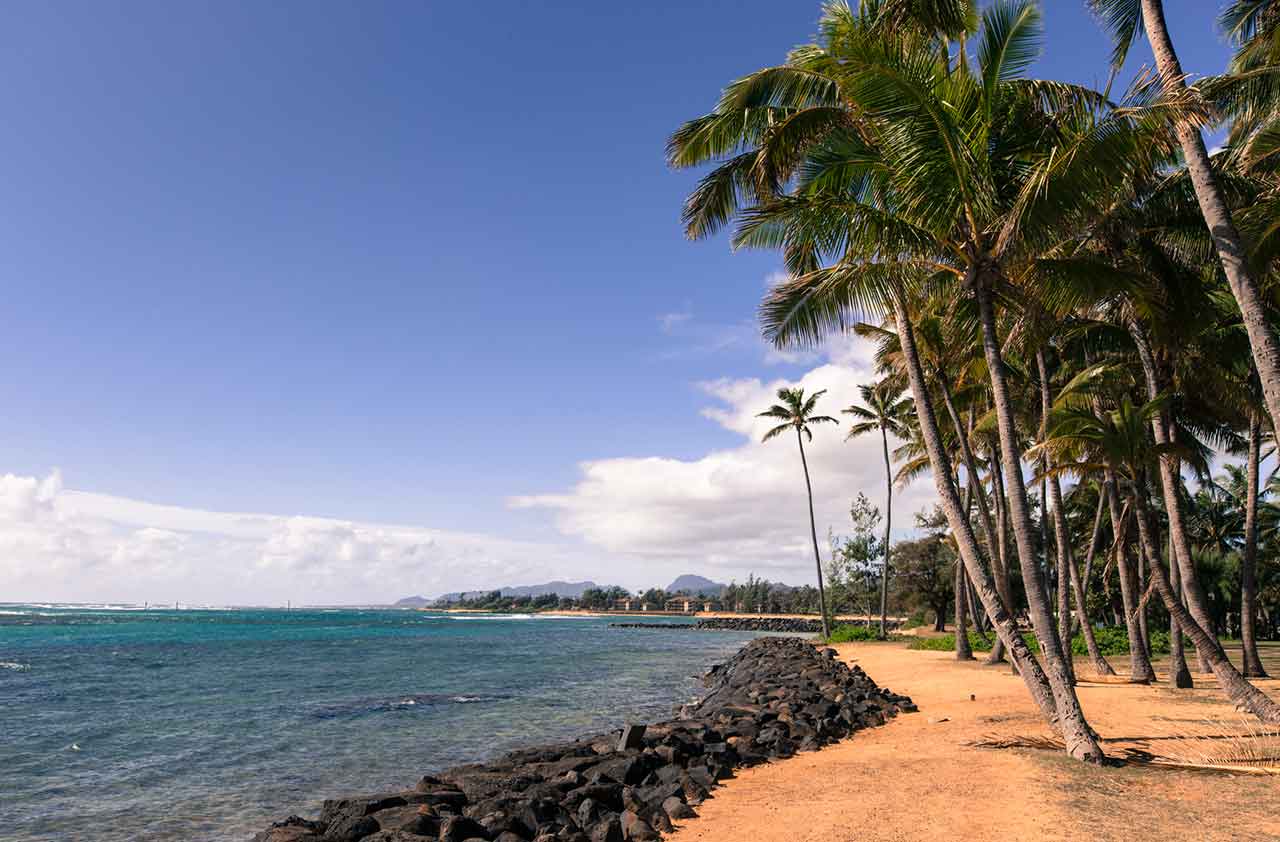
Kapaa, Hawaii
- Total population: 71,093
- Share of population, age 45 to 64: 28.3%
- Cost of living: 67.5% above the national average**
- Median income, age 45 to 64: $82,891
- State's retiree tax picture: Tax Friendly
- Popular local beaches: Kapa'a Beach Park, Fuji Beach, Keālia Beach
With its tropical climate and pristine beaches, Hawaii can be a retirement paradise for sun- and fun-loving folk. But the state's high costs is a big deterrent, especially for early retirees who need to make their money last even longer. With that in mind, we suggest considering the micropolitan area of Kapaa (which means "solid"), where living costs are not quite as intimidating. While still very high compared with the U.S., in general, they're notably lower than the rest of the state (86.9% above the national average) and capital Honolulu (89.7% above the national average for all residents and 92.2% above the national average for retirees).
Kapaa proper is a small town with a population of just 10,505. It sits on the eastern shore of Kauai. Like many spots in Hawaii, it has plenty to offer in terms of natural beauty and outdoor recreation with beaches, parks and hiking trails lush with wildlife and ocean views. It also has the Samuel Mahelona Memorial Hospital, along with an outpatient clinic, within city limits and is just eight miles from Lihue International Airport. So it's not as remote as you might expect an island paradise to be. Indeed, it's a popular local shopping village with farmers markets, street vendors and several restaurants. Just don't mind all the tourists.
**Overall cost of living for all residents, according to Sperling's BestPlaces.
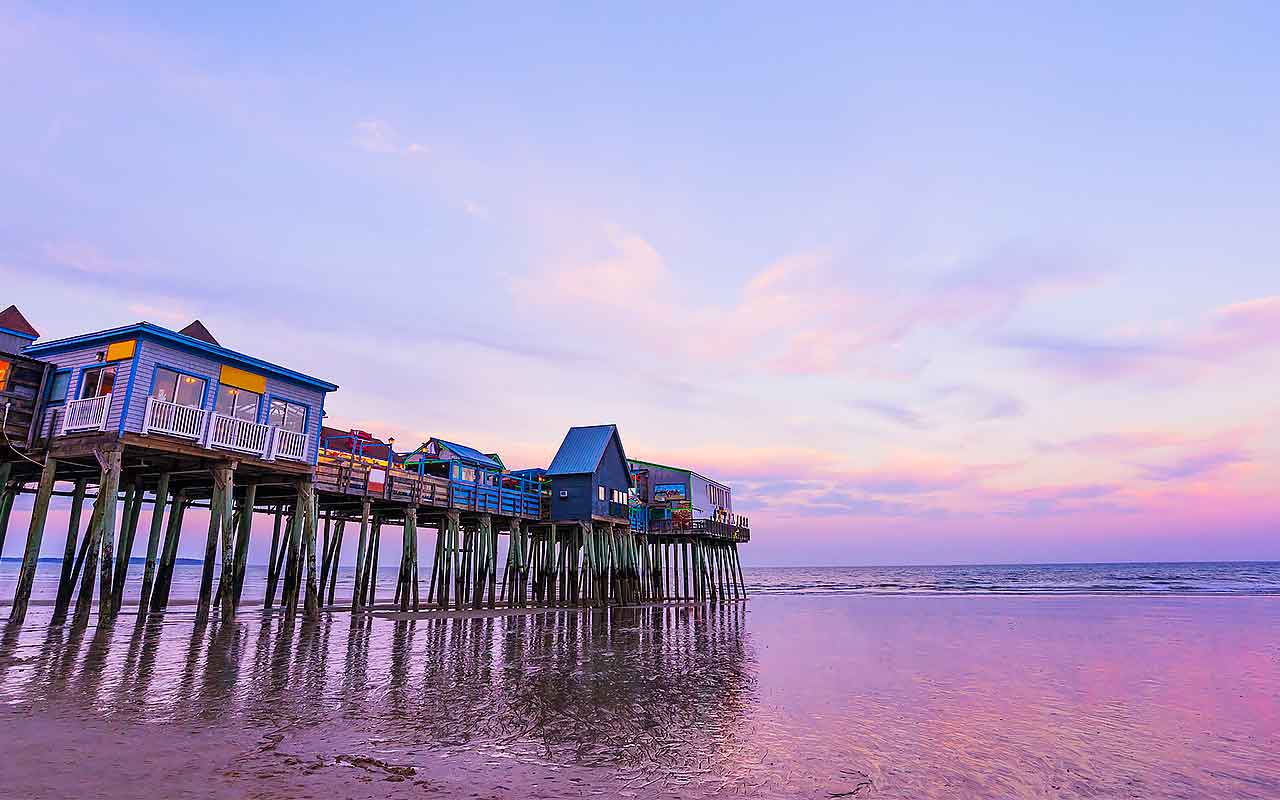
Portland, Maine
- Total population: 525,776
- Share of population, age 45 to 64: 30.2%
- Retired cost of living: 17.1% above national average
- Median income, age 45 to 64: $77,152
- State's retiree tax picture: Mixed
- Popular local beaches: Crescent Beach, Ferry Beach, Old Orchard Beach
The largest city in Maine, Portland offers a lively downtown and plenty of urban-esque amenities amidst the great outdoors of the Pine Tree State. You can enjoy museums, theaters and an array of eclectic dining. The flagship L.L. Bean store in nearby Freeport is a must-see for many visitors, but resident shoppers also flock to Portland’s unique boutiques and outlets.
All the while, you’re never too far from the area's many beaches. That means ample opportunity to lounge on the shore or dive into water-based activities including fishing, kayaking, sailing and even surfing. And of course, hiking and biking trails abound—perfect in the (much) colder months, too, for cross-country skiing and snowshoeing.
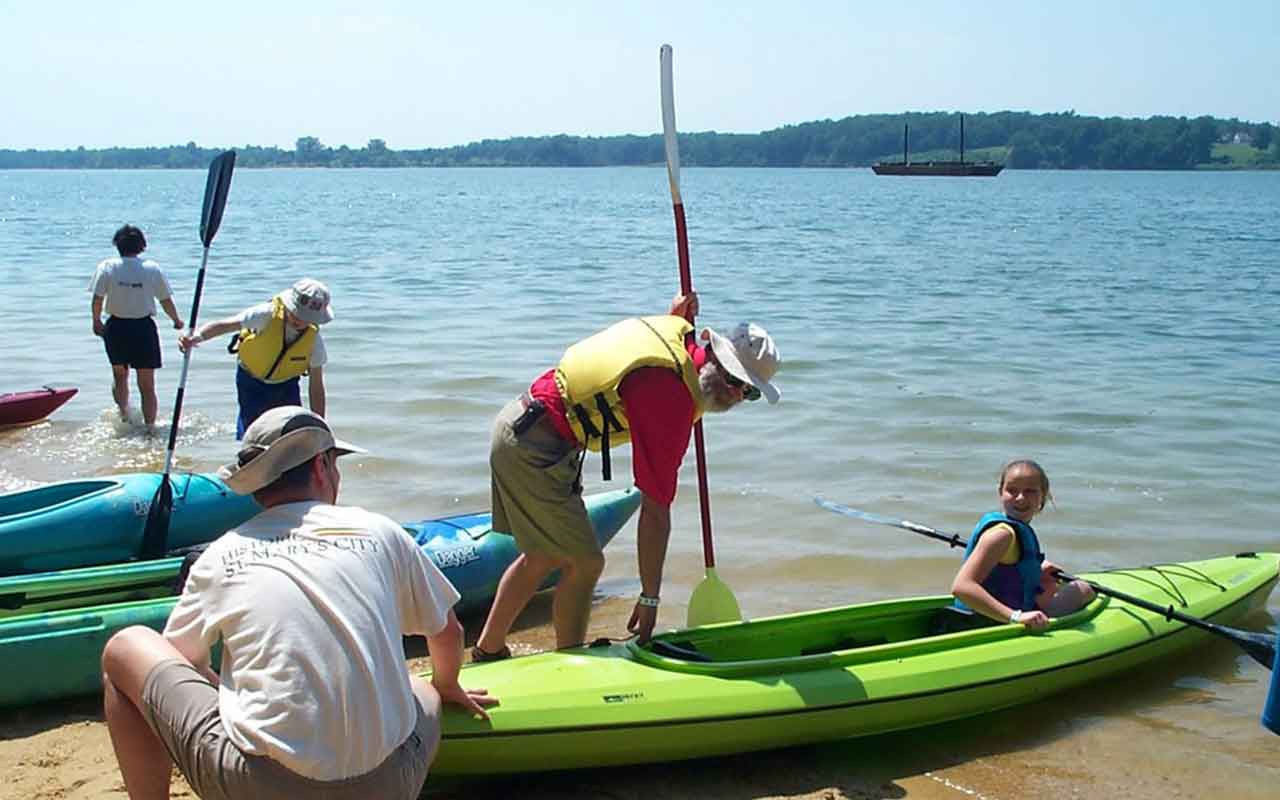
Lexington Park, Md.
- Total population: 110,979
- Share of population, age 45 to 64: 27.5%
- Cost of living: 12.0% above the national average**
- Median income, age 45 to 64: $105,417
- State's retiree tax picture: Least Tax Friendly
- Popular local beach: Elms Beach Park
About an hour and a half from Washington, D.C., the California-Lexington Park metro area of Maryland offers a quick escape from politics to the Chesapeake Bay. And despite the local population's high incomes (and the area's abundance of millionaires), living costs are lower than much of the rest of the state—Maryland's cost of living is 24.6% above the national average. And it's far more affordable than the District, where living costs are 73.9% above the national average.
In town, you can visit the Patuxent River Naval Air Museum to peruse the collection of naval artifacts, expanding beyond just operational aircrafts and focusing on the research and testing stages of development. (While it was once an official U.S. Navy museum, due to federal budget restructuring, it is now a private non-profit organization.) And in the rest of St. Mary's County, early retirees can explore and enjoy more than 500 miles of shoreline on the Patuxent and Potomac Rivers and the Chesapeake Bay.
**Overall cost of living for all residents, according to Sperling's BestPlaces.
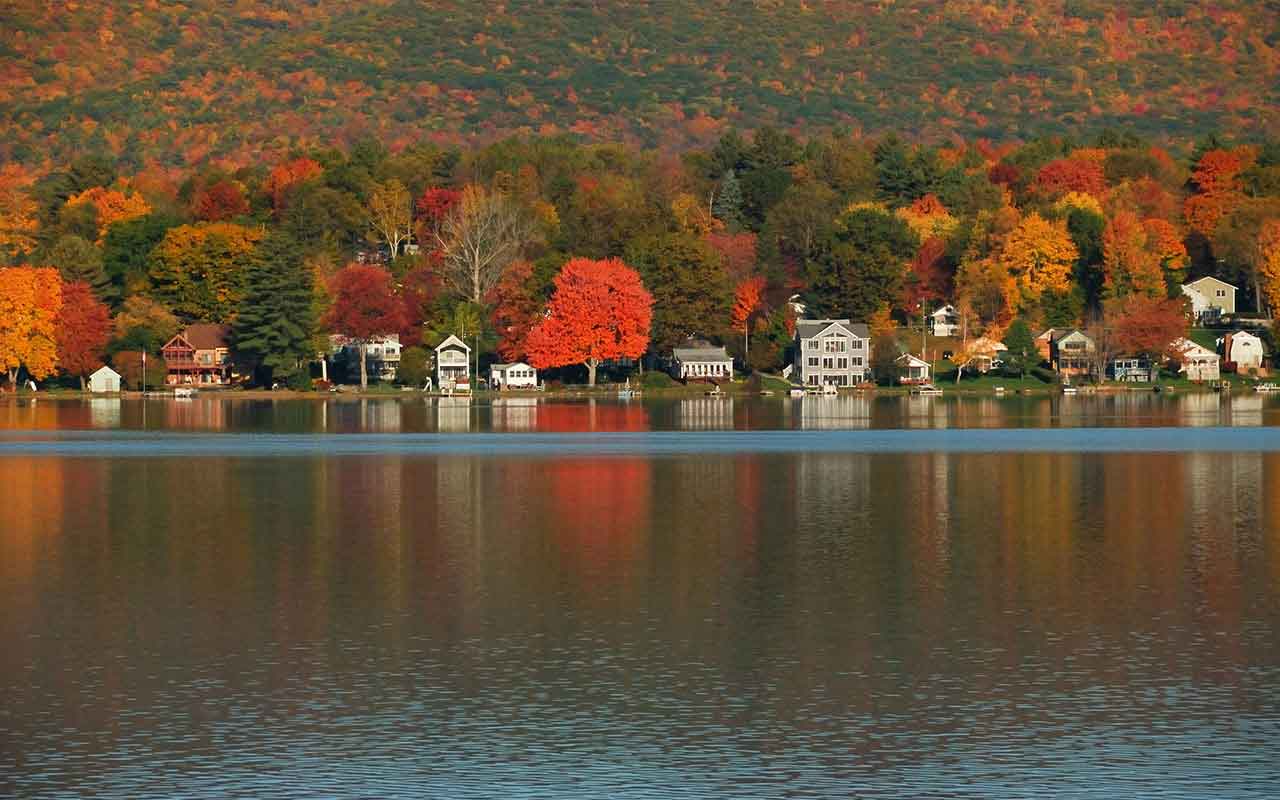
Pittsfield, Mass.
- Total population: 127,751
- Share of population, age 45 to 64: 30.3%
- Retired cost of living: 7.4% above national average
- Median income, age 45 to 64: $65,943
- State's retiree tax picture: Not Tax Friendly
- Popular local beach: Burbank Park on Onota Lake
New England is notoriously expensive, but Pittsfield offers a small pocket of relative affordability—at least more reasonably priced than the Boston metro area, where living costs for retirees are 55.6% above the U.S. average. Housing is particularly affordable: The median home value in the city, located in the western part of the state, is $173,100, compared with $193,500 for the U.S. and a whopping $455,100 for Boston proper.
Leaf peeping in the fall may be enough to draw you to the Berkshires. But you can find plenty to enjoy year round, including camping, fishing, hiking and skiing. Nearby, enjoy musical performances at the Tanglewood Music Center, the summer home of the Boston Symphony Orchestra. Art lovers may want to make short drive to the Clark Art Institute in Williamstown and the Massachusetts Museum of Contemporary Art (MASS MoCa, for short) in North Adams.
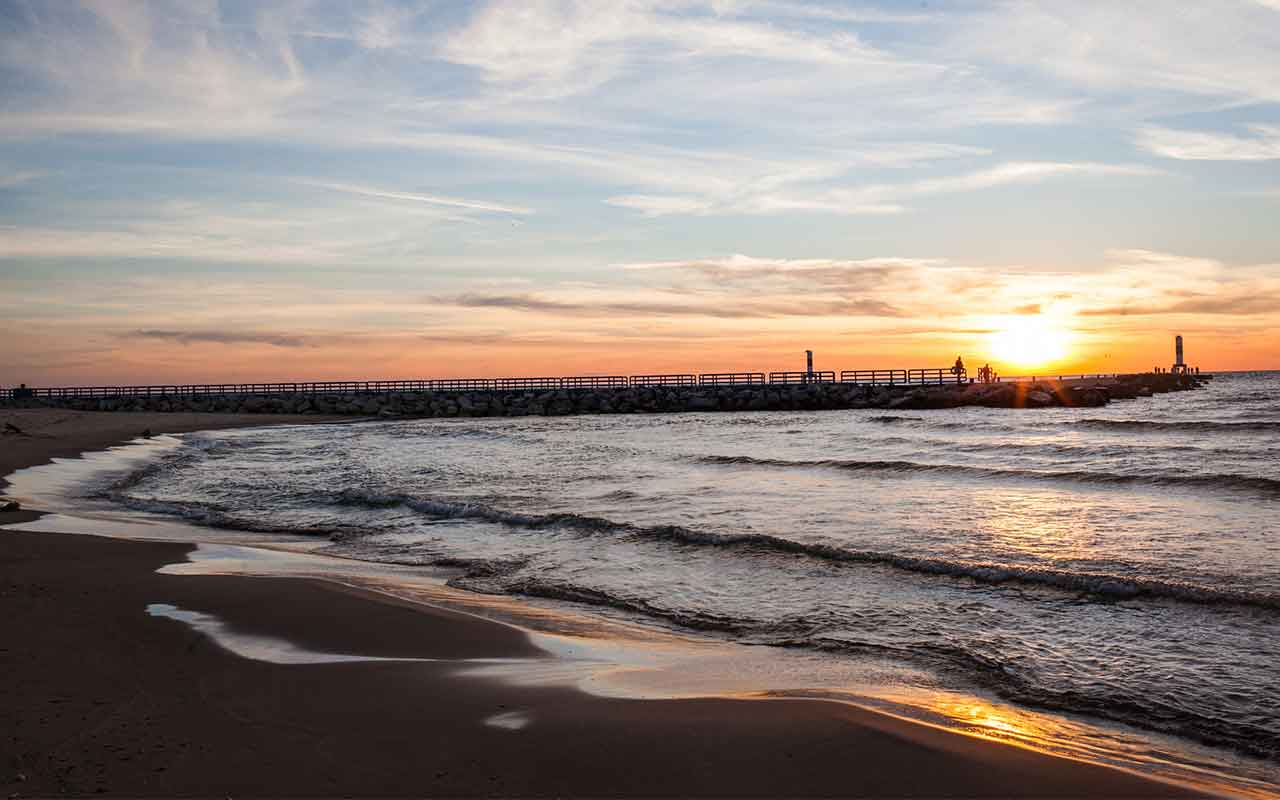
Grand Rapids, Mich.
- Total population: 1.0 million
- Share of population, age 45 to 64: 25.5%
- Retired cost of living: 2.2% below national average
- Median income, age 45 to 64: $71,042
- State's retiree tax picture: Not Tax Friendly
- Popular local beaches: Grand Haven City Beach, Millennium Park, Oval Beach
Michigan was hit hard by the Great Recession, when the automotive industry took a particularly sharp dive. A decade later, the business of cars has somewhat recovered, and the state's overall economic picture is generally improving. But poverty remains a big problem, especially in certain areas, including Detroit, Flint and Kalamazoo, where the overall poverty rate ranges from 31% to 42%, compared with 12.3% for the U.S., according to the U.S. Census Bureau.
Grand Rapids is in a relatively better economic state. The overall poverty rate is lower at 22.5% and is actually below average among 45- to 64-year-olds at 8.2%, versus 10.6% across the country. And while living costs are a bit higher than than they are in other parts of the state (Kalamazoo's retirees have living costs 21.1% below the national average), they're still lower than the rest of the country, and higher median incomes help cover the spread. Plus, the local art, food and music scenes, along with an abundance of outdoor recreation options, will keep you entertained. Lake Michigan beaches are just 30 minutes away. And nicknamed Beer City, Grand Rapids has an "Ale Trail" with more than 80 breweries.

Minneapolis
- Total population: 3.5 million
- Share of population, age 45 to 64: 26.7%
- Retired cost of living: 5.8% above national average
- Median income, age 45 to 64: $89,630
- State's retiree tax picture: Least Tax Friendly
- Popular local beaches: Cedar Lake Park beaches, Lake Harriet North Beach, Thomas Beach
If the cold winters and equally harsh tax situation don't put you off of the North Star State, the Minneapolis metro area—including state capital, St. Paul—can be a great place to retire. In fact, the Milken Institute rates it as the 14th-best large metro area for successful aging, citing its livability including low crime rate and low senior poverty rate; high engagement of its older population; long life expectancy; and many outdoor recreation options (it’s the Land of 10,000 Lakes, after all).
Young retirees might prefer the bigger of the Twin Cities. Minneapolis (city population: 425,403) offers more of an urban lifestyle—while maintaining its midwestern charm—with an active night life and vibrant music scene (it was home to the late legend Prince). St. Paul (city population: 307,695), across the Mississippi River, may be the better choice for those looking for smaller crowds, more quiet and added affordability. The median home value in St. Paul is $187,400, compared with $222,600 in Minneapolis and $199,700 in all of Minnesota. Whichever twin you choose, you'll get access to all the arts, sports and college town amenities that make the area a great place to live and retire.
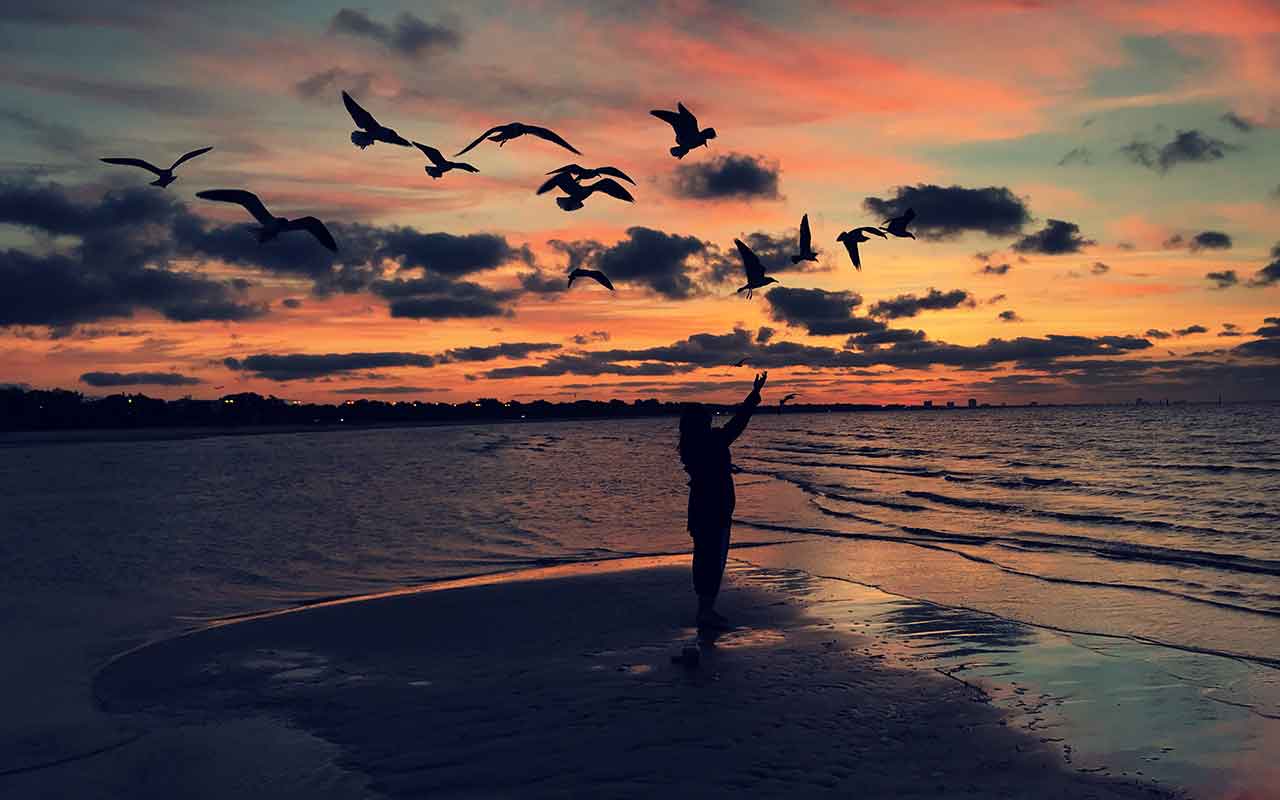
Gulfport-Biloxi, Miss.
- Total population: 388,082
- Share of population, age 45 to 64: 26.3%
- Retired cost of living: 13.0% below national average
- Median income, age 45 to 64: $53,386
- State's retiree tax picture: Most Tax Friendly
- Popular local beaches: Gulfport Beach, Biloxi Beach
First, the bad news: Mississippi is the most impoverished of all 50 states in the nation with a poverty rate of 19.8% among all residents, compared with 12.3% for the U.S. The 45- to 64-year-old cohort of the Gulfport-Biloxi metro area suffers less with a 14.1% poverty rate, but that's still greater than the 10.6% rate for the age group across the country. Plus, the state faces "extremely significant damage" due to tariffs, according to the U.S. Chamber of Commerce, making its current economic outlook unclear.
The good news: If you can head down to the Magnolia State with a healthy nest egg, the low living costs and generous tax breaks should allow you to comfortably make it last throughout your long retirement. In fact, the Gulfport-Biloxi metro area is among the cheapest in the U.S. Gulfport offers more affordable housing with a median home value of $118,300 versus $154,800 in Biloxi (and $193,500 for the U.S.). And either city affords you access to white sand beaches on the Gulf of Mexico, casinos, oodles of outdoor recreation—including kayaking, birding, fishing and shrimping, camping and golfing.
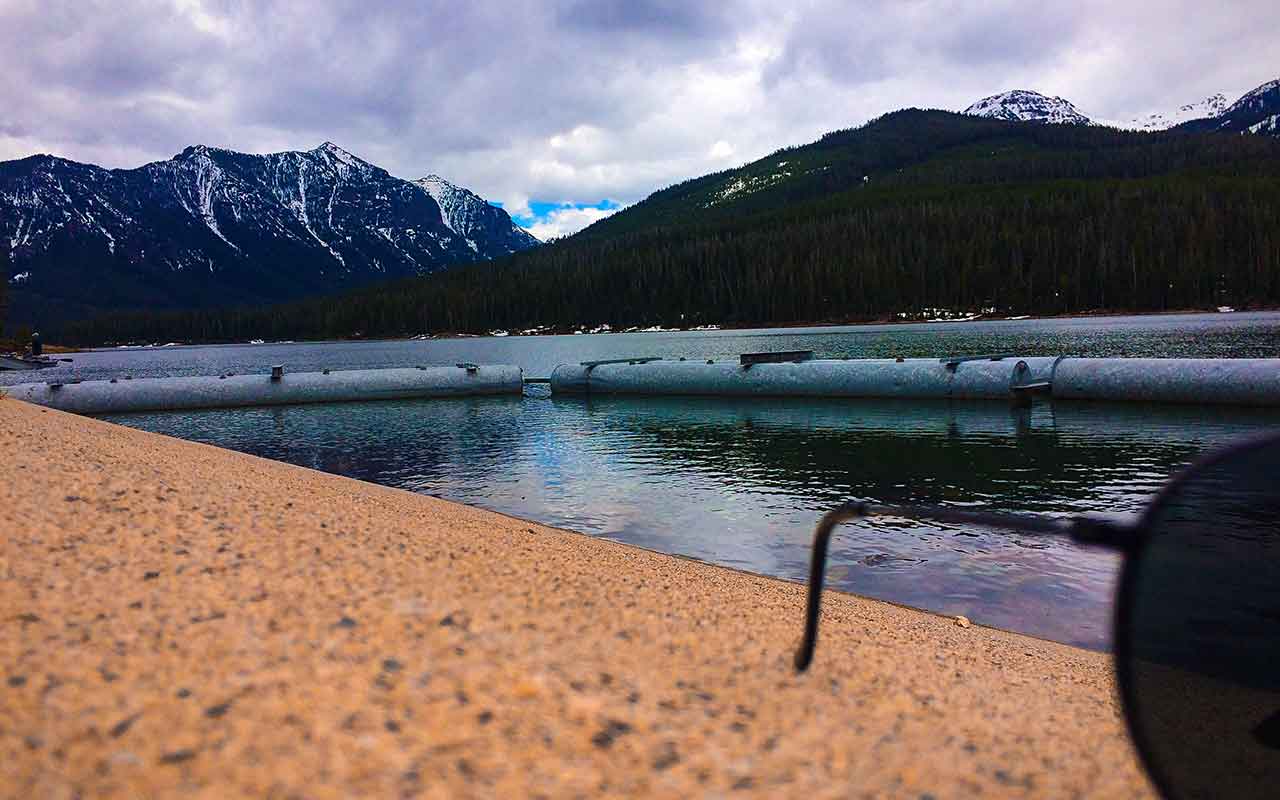
Bozeman, Mont.
- Total population: 100,733
- Share of population, age 45 to 64: 23.0%
- Retired cost of living: 2.6% above national average
- Median income, age 45 to 64: $75,219
- State's retiree tax picture: Not Tax Friendly
- Popular local beach: East Gallatin Recreation Area (a.k.a. Bozeman Beach)
If you've ever dreamed of retiring to the mountains, here's your chance. Bozeman is in southern Montana, nestled in the Gallatin Valley and surrounded by majestic ranges and national forests. Yellowstone and Grand Teton national parks sit due south of Bozeman. The geography means you have to be comfortable hiking, mountain biking, skiing and backcountry exploring your way through retirement. Hunting and fishing are also popular local activities.
But don't expect total isolation. Montana State University's Bozeman campus is home to about 15,000 students. Exuberant co-eds might not be the neighbors you pictured in your mountain-view retirement destination, but you may enjoy the dining, culture and entertainment options that come with a college town.
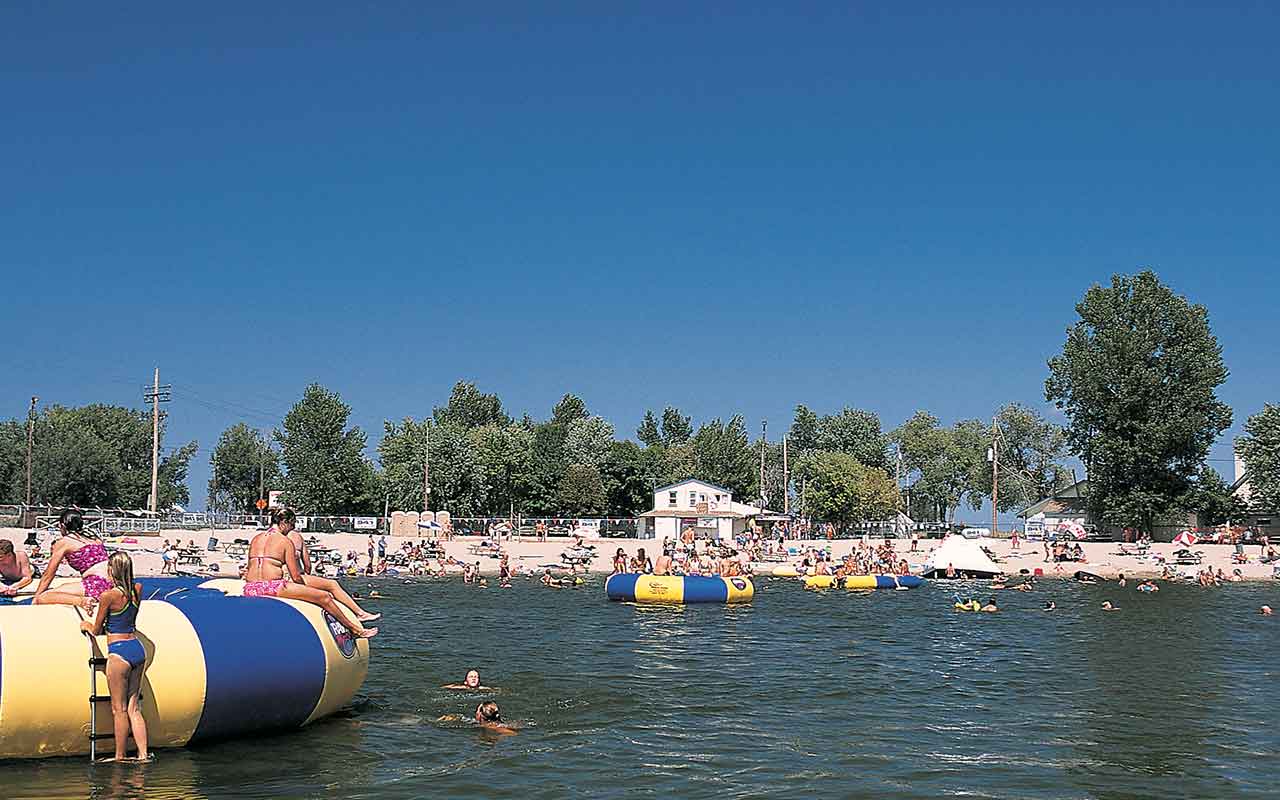
Omaha, Neb.
- Total population: 914,190
- Share of population, age 45 to 64: 24.9%
- Retired cost of living: 3.8% below national average
- Median income, age 45 to 64: $76,471
- State's retiree tax picture: Least Tax Friendly
- Popular local beaches: Lake Manawa State Park, Fremont Lakes State Recreation Area, Two Rivers State Park
Home to investing guru Warren Buffett, Omaha has been and continues to invest in itself, making it an increasingly attractive—and still affordable—place to live at any age. Just this year, the city has broken ground on a $300 million Riverfront Revitalization project that aims revamp an old industrial area to add housing, office space and entertainment areas. And already, you can enjoy an array of restaurants, shops, art galleries, concert halls and sporting events in town. (Some areas and activities may be disrupted by the revitalization project during the construction period, scheduled to complete in 2024.) Walking and biking trails throughout the city, along with five area lakes and two rivers, also provide plenty of outdoor activity.
All that comes at a low cost, with housing being particularly affordable. Indeed, Buffett bought his own modest home there in 1958 for just $31,500—his most famously frugal money move and what he's called the third best investment of his life (after his two wedding rings). Home prices aren't quite that cheap anymore, but the median home value of $146,500 is still relatively affordable, compared with the national median of $193,500.
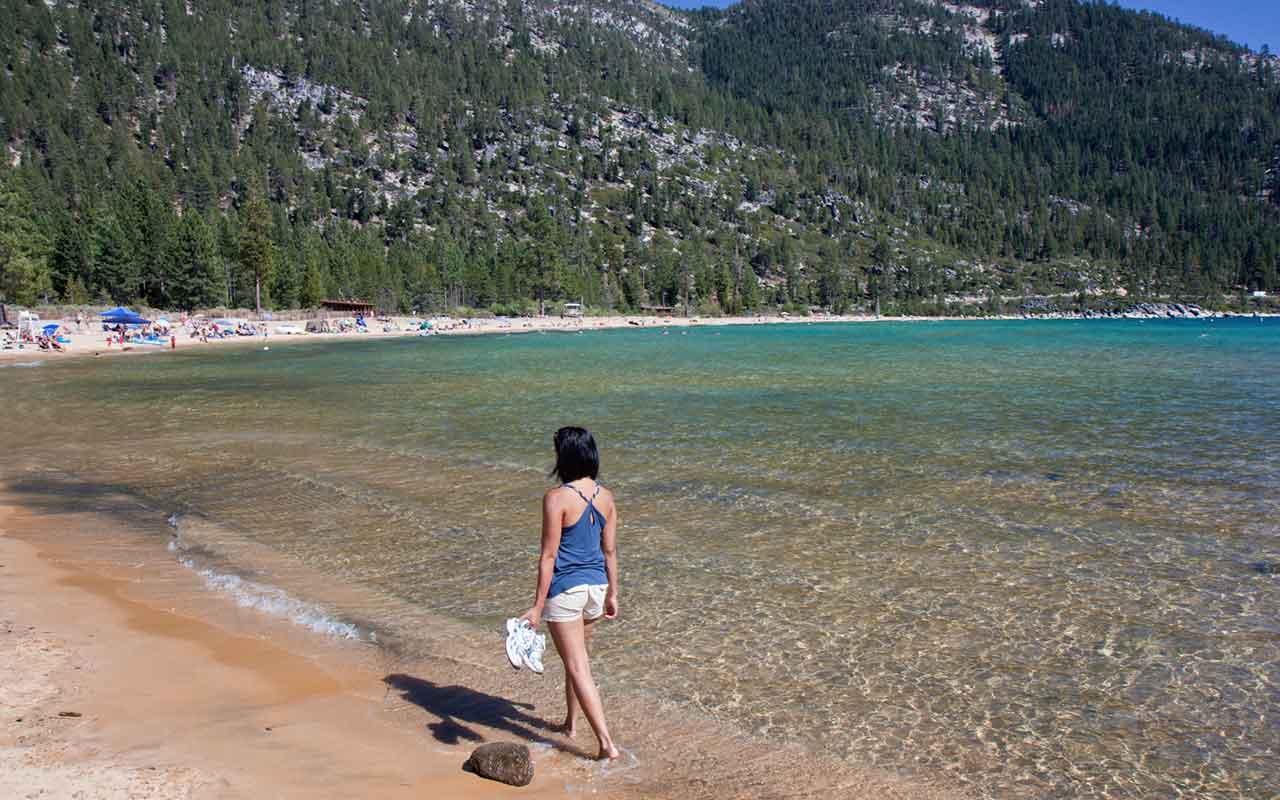
Gardnerville Ranchos, Nev.
- Total population: 47,632
- Share of population, age 45 to 64: 31.1%
- Cost of living: 34.1% above the national average**
- State's retiree tax picture: Most Tax Friendly
- Popular local beaches: Sand Harbor Beach, Baldwin Beach, Kiva Beach
Downside: You'll pretty much have to be a millionaire to afford the local living costs. Housing is the biggest budget killer with the median home value in Gardnerville Ranchos being $254,000, according to the U.S. Census Bureau, compared with $216,400 in Nevada and $193,500 in the U.S. Upside: State taxes are light not just for retirees, but for residents of all ages. In fact, the Silver State is one of Kiplinger's Most Tax-Friendly States in the U.S., with its low property tax and zero income tax.
**Overall cost of living for all residents, according to Sperling's BestPlaces.

Manchester, N.H.
- Total population: 406,371
- Share of population, age 45 to 64: 30%
- Retired cost of living: 10.4% above national average
- Median income, age 45 to 64: $93,052
- State's retiree tax picture: Most Tax Friendly
- Popular local beaches: Crystal Lake Park, Gallien's Town Beach, Amherst Town Beach
The Manchester metro area, including Nashua, may come with relatively high living costs, but the above-average household incomes help make them manageable. The Granite State's rock-solid tax advantages help, too. It’s a big reason why we recently ranked New Hampshire the ninth best for retirement.
Plenty of amenities make the area appealing to retirees. You can find a nice selection of restaurants in town and plenty of outdoor recreation to enjoy, including nearby snowshoeing, hiking, skiing and just taking in the scenic mountain views. And when you need a big-city escape—the city population of Manchester is just 111,196, after all—Boston is only an hour away.
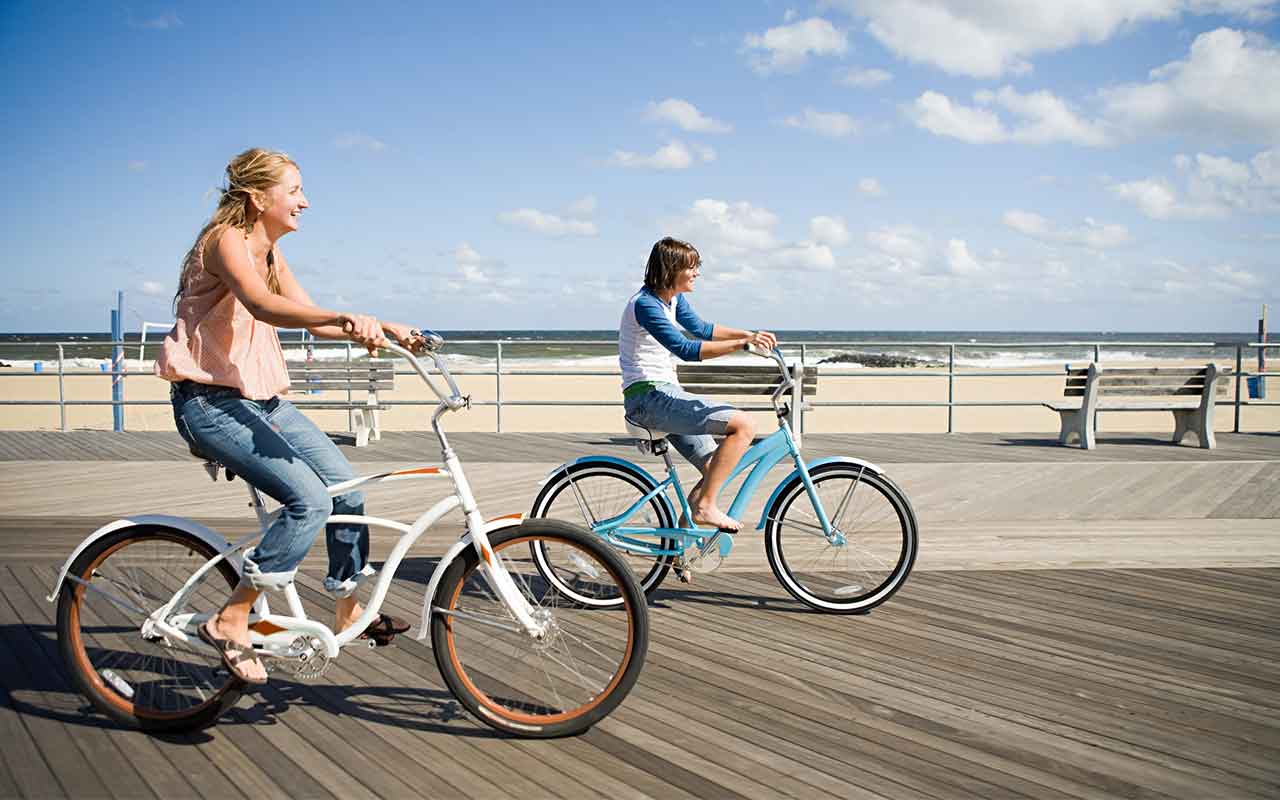
Asbury Park, N.J.
- Total population: 15,511*
- Share of population, age 45 to 64: 24.2%
- Cost of living: 25.5% above the national average**
- Median income, age 45 to 64: n/a
- State's retiree tax picture: Mixed
- Popular local beach: Asbury Park Beach
If you're hoping for a beach-based retirement, New Jersey may not be the first place that comes to mind. But the Jersey Shore can be a lovely place to retire to, albeit generally pricey, just like the rest of the Garden State. Central and South Jersey offer a bit more affordability in retirement than the northern, New York City-adjacent region, at least. For example, in Middlesex and Monmouth counties, the cost of living for retirees is 16.1% above the national average—not quite as bad as in Bergen and Passaic counties, where it's 23.1% above the national average.
One of the relatively more affordable oceanfront towns is Asbury Park, for bad reasons. Until recently, the 1.4-square-mile city was as famous for its crime and corruption as it was for its boardwalk and beaches. But revitalization efforts over the past several years are bringing the latter characteristics back into the spotlight and adding on ritzier housing options, restaurants and shops, mainly on the east side of town. And still, Asbury Park maintains a quirky vibe with an arts and music scene that persisted even through the town's darker days.
*City population, according to the U.S. Census Bureau.
**Overall cost of living for all residents, according to Sperling's BestPlaces.
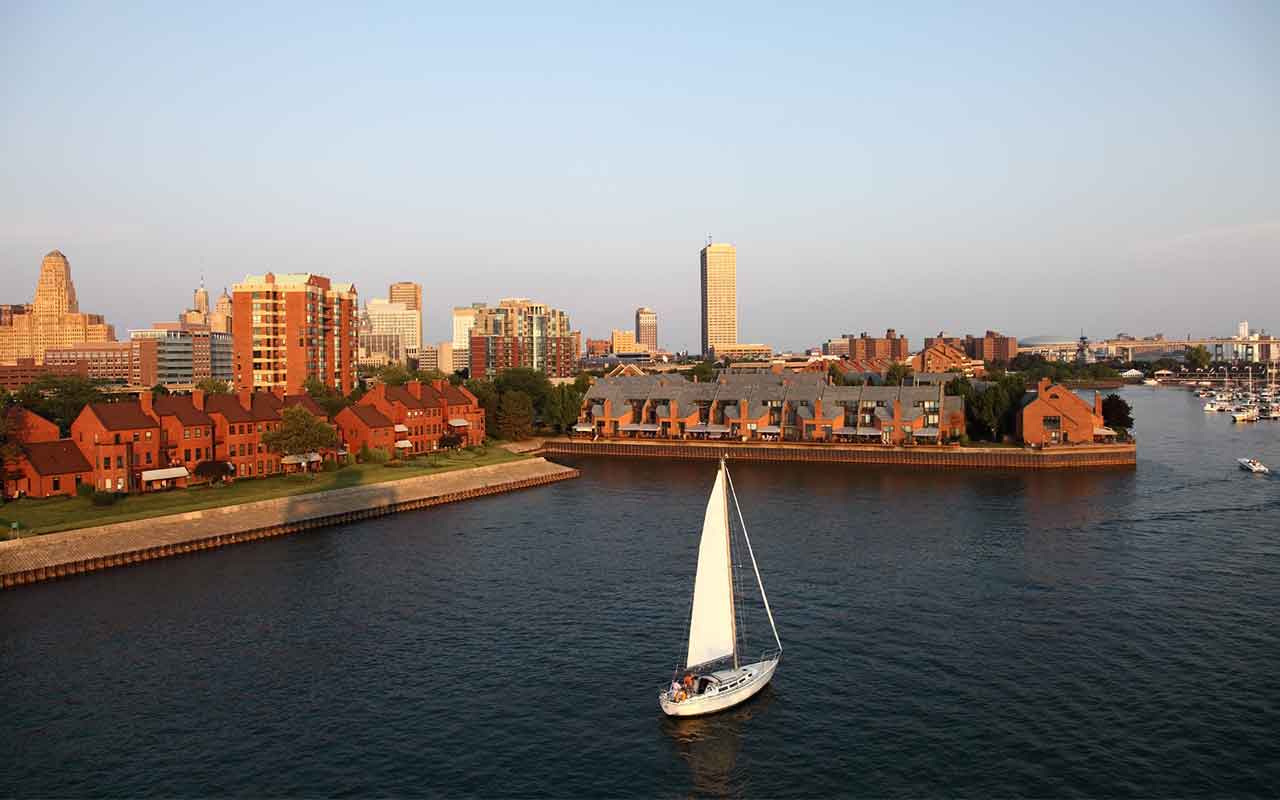
Buffalo, N.Y.
- Total population: 1.1 million
- Share of population, age 45 to 64: 28.3%
- Retired cost of living: 6.1% below national average
- Median income, age 45 to 64: $67,558
- State's retiree tax picture: Not Tax Friendly
- Popular local beaches: Beaver Island State Park, Bennett Beach, Evangola State Park
This metro area, which includes Cheektowaga and Niagra Falls, offers a pocket of affordability in a largely expensive Empire State. Health care and housing costs for retirees are particularly low at 12.7% and 9.5% below the national average, respectively. While the median home value in New York is a whopping $293,000, compared with $193,500 for the U.S., it's just a fraction of that in Buffalo at just $77,800.
For your outdoor recreation, how do you like shoveling? The average snowfall is 94.4 inches each winter, but in four of the past six years, the accumulation has topped 100 inches, including 101.1 inches in the 2018-19 season. Once you dig yourself out, you partake in a wonderland of skiing, skating, tubing, pond hockey and a blizzard of other winter activities. And, of course, it doesn't snow in summer (we swear), which is when you can enjoy Buffalo's lakeside and riverside beaches.

Bismarck, N.D.
- Total population: 128,673
- Share of population, age 45 to 64: 25.8%
- Retired cost of living: 2.8% below national average
- Median income, age 45 to 64: $82,884
- State's retiree tax picture: Tax Friendly
- Popular local beach: McDowell Dam Recreation Area
The capital city’s strong economy means plenty of employment opportunities for early retirees who want the option of popping back into the workforce, if only part time. It also means you can find an array of restaurants and shops around town, as well as attractions, including the Lewis and Clark Riverboat, the North Dakota Heritage Center, Fort Abraham Lincoln and the Dakota Zoo.
On the banks of the Missouri River, you can enjoy more active leisure in the summertime. That’s when it’s warm enough to go cruising, boating, kayaking and canoeing, as well as hiking and biking on the trails around the city and golfing at Hawktree Golf Club. Otherwise, hope you love snow. Bismarck gets an average 46 inches of snow each year, compared with an average 28 inches for the U.S. And the average temperature in January, the coldest month, is 2 degrees.

Cincinnati
- Total population: 2.2 million
- Share of population, age 45 to 64: 27%
- Retired cost of living: 4.2% below national average
- Median income, age 45 to 64: $72,675
- State's retiree tax picture: Mixed
- Popular local beaches: East Fork State Park, Cesar Creek State Park
With relatively high incomes and relatively low living costs, the numbers add up favorably for an early retirement to Cincinnati. Housing for retirees is the biggest driver of affordability, falling 17.5% below the national average. The median home value in the city is $124,200, lower than the median $193,500 in the U.S. and even the median $135,100 in all of Ohio.
Despite the cheap costs, Cincinnati is rich with big-city amenities, including an active arts and entertainment scene, plenty of restaurants and breweries, major sports teams and a healthy job market. The diverse local economy is home to eight Fortune 500 companies, as well as the University of Cincinnati and nearby Northern Kentucky University.
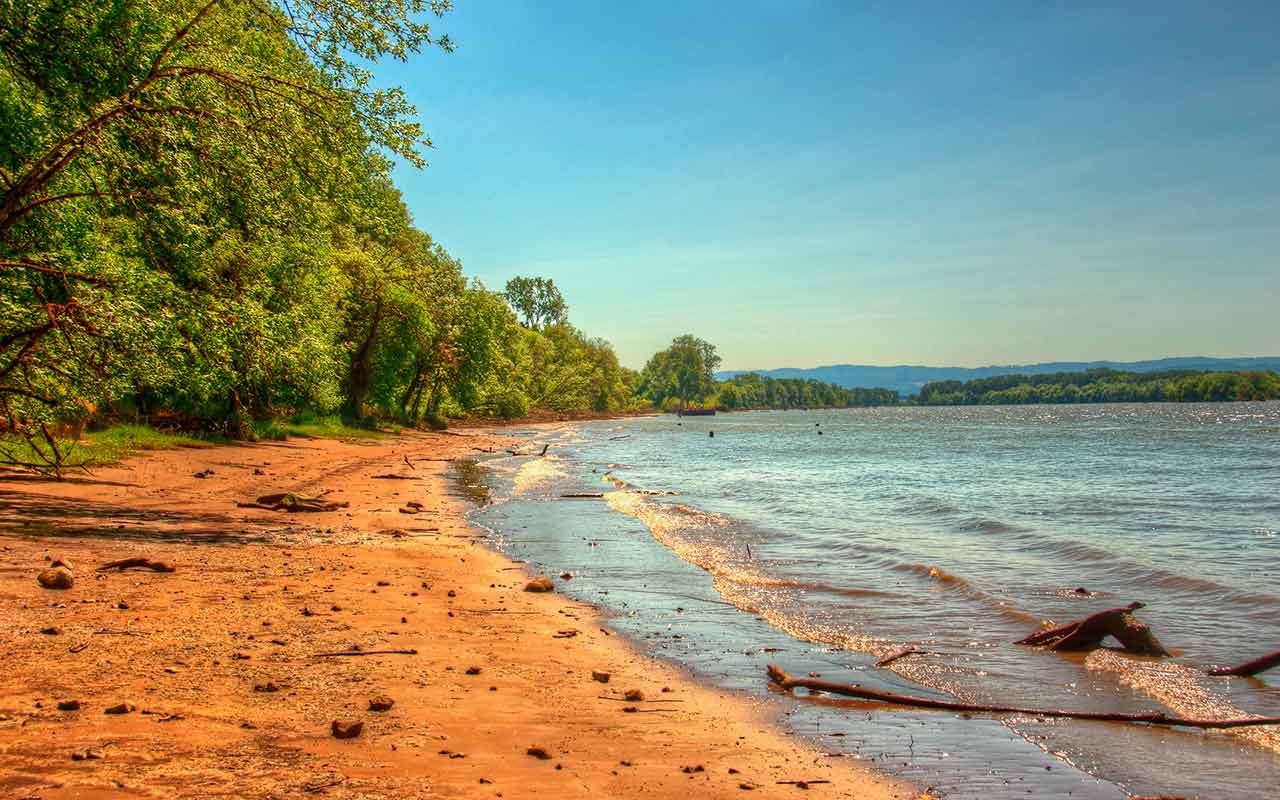
Portland, Ore.
- Total population: 2.4 million
- Share of population, age 45 to 64: 26.2%
- Retired cost of living: 28.7% above national average
- Median income, age 45 to 64: $79,111
- State's retiree tax picture: Not Tax Friendly
- Popular local beaches: Columbia River Gorge National Scenic Area (swimming area at Lower Punch Bowl Trail), Sauvie Island (part of Collins Beach is clothing optional)
As the TV show "Portlandia" says, Portland is where young people go to retire, and we concur, but seriously. Young retirees can certainly appreciate the city's laid-back vibe blended with its entrepreneurial spirit. And anyone could enjoy the big-city amenities in pedestrian-friendly neighborhoods, such as the popular Pearl District, coupled with its natural diversions, including Forest Park and Mount Tabor in the city and Mount Hood and the ocean also nearby.
Less enjoyable: the high costs and tax situation.

Providence, R.I.
- Total population: 1.6 million
- Share of population, age 45 to 64: 28.1%
- Retired cost of living: 22.5% above national average
- Median income, age 45 to 64: $77,721
- State's retiree tax picture: Not Tax Friendly
- Popular local beaches: Warwick City Park, Conimicut Point Beach, Rocky Point Park
Home to Ivy League Brown University and the world-renowned Rhode Island School of Design, as well as a handful of other colleges, Providence can be a great fit for intellectuals and artists looking to retire early. They'll have no shortage of things to do, with the schools offering gallery nights, performing arts events, educational opportunities and more. And their presence has helped draw a variety of restaurants and businesses to the area, too.
Unfortunately, living costs and an unfriendly tax environment can be prohibitive throughout the tiny state, and Providence is no exception.
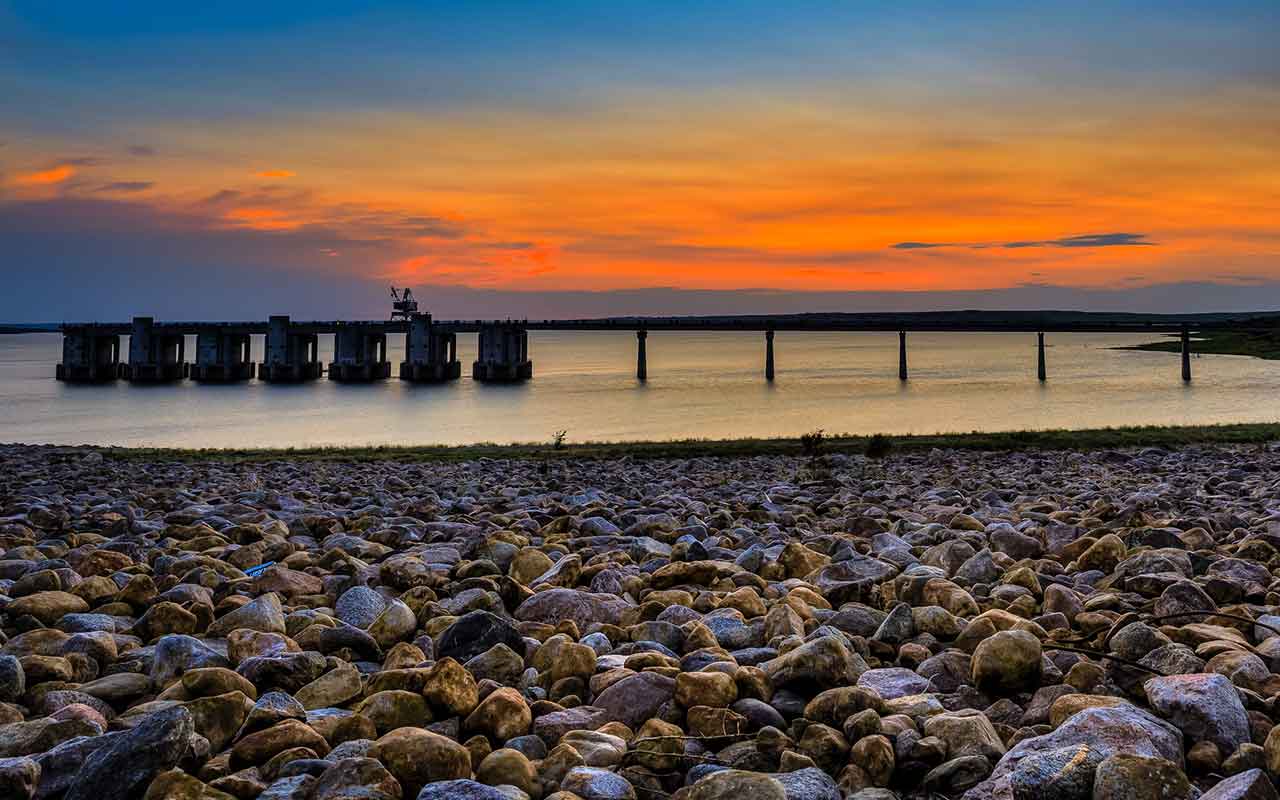
Pierre, S.D.
- Total population: 21,956
- Share of population, age 45 to 64: 27.8%
- Retired cost of living: 2.5% below national average
- Median income, age 45 to 64: $71,807
- State's retiree tax picture: Most Tax Friendly
- Popular local beach: Oahe Downstream Recreation Area
South Dakota consistently tops our rankings of best states for retirement, what with its low living costs, tax friendliness and strong fiscal health. And while its farm economy is currently hurting from the recent tariffs situation, the financial services and tourism industries continue to hum along and contribute to the state's jobs growth.
Capital city Pierre, situated on the Missouri River, is a nice place to settle in the Mount Rushmore state, particularly for fisherman and hunters. Lake Oahe, Lake Sharpe and smaller surrounding lakes offer anglers year round action. And nearby Fort Pierre National Grassland consists of 116,000 acres of federal land, where hunters can bag pheasants, prairie chickens and sharp-tail grouse, as well as waterfowl, white-tail deer and wild turkeys.
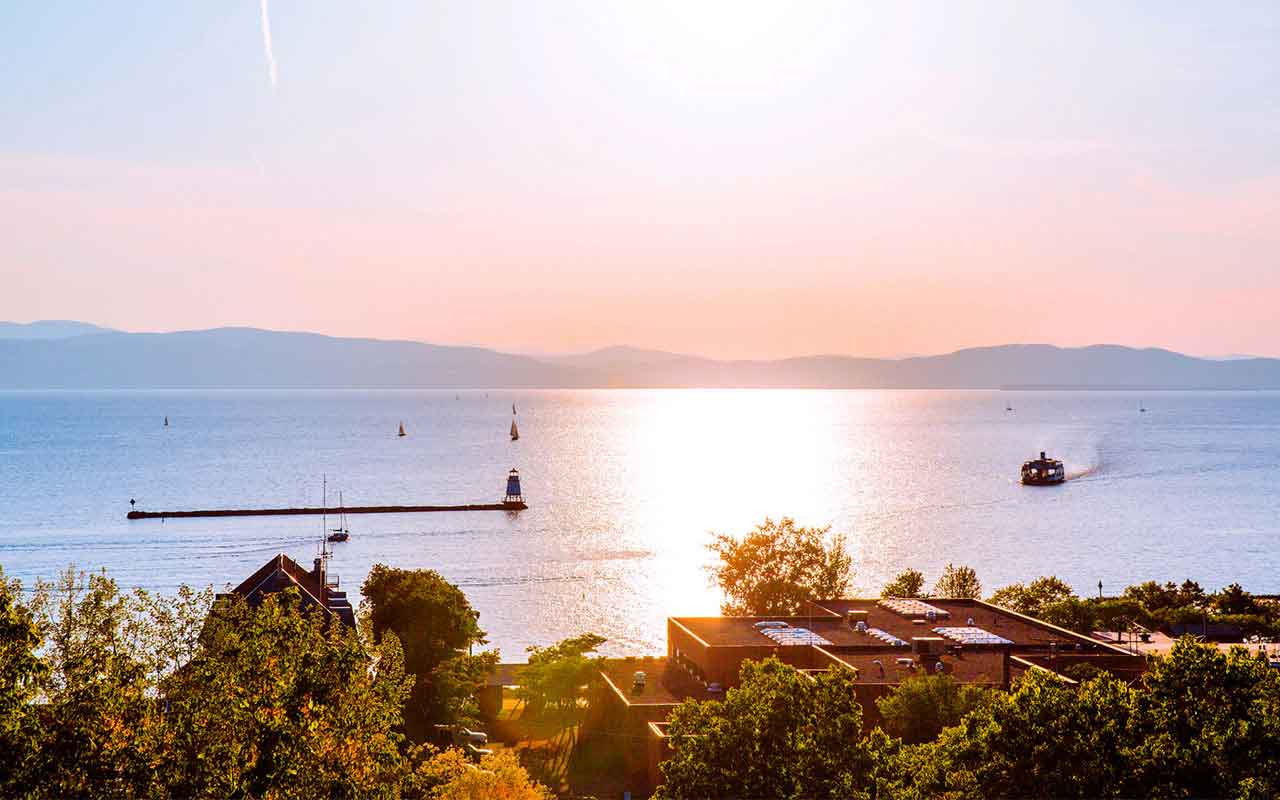
Burlington, Vt.
- Total population: 216,751
- Share of population, age 45 to 64: 27.6%
- Retired cost of living: 17.2% above national average
- Median income, age 45 to 64: $83,500
- State's retiree tax picture: Least Tax Friendly
- Popular local beaches: North Beach, Leddy Beach, Blanchard Beach
This small mountain city on the shores of Lake Champlain is a picturesque setting for tree-hugging retirees of all ages. Outdoor recreation is plentiful with miles of hiking and biking paths, nearby beaches where you can swim, kayak or paddleboard in the warmer months, and numerous skiing options in the area. An eco-friendly vibe permeates the town, from the businesses bolstering the city's economy, such as household-products maker Seventh Generation, to the local food movement feeding the neighborhood.
Unfortunately, being green isn't easy on your wallet. Taxes and living costs are high, with housing among retirees being notably expensive at 43.2% above the national average. Indeed, the median home value is $220,600 in the Green Mountain State and $267,500 in Burlington. But if you're willing to give the workforce an encore in a remote job, the state is offering to alleviate some of that financial burden by paying you $5,000 to live there, which you could use to cover costs for moving, setting up a home office or using a co-working space.

Seattle
- Total population: 3.7 million
- Share of population, age 45 to 64: 26.4%
- Retired cost of living: 50.1% above national average
- Median income, age 45 to 64: $92,533
- State's retiree tax picture: Tax Friendly
- Popular local beaches: Alki Beach Park, Madison Park Beach, Matthews Beach Park
Seattle has been a desirable destination for people in all stages of life for years. And its popularity is reflected in its living costs, among the most expensive in the U.S.
Still, the strong local economy and its booming tech scene, which promises typically high-paying jobs, draws high-skilled workers willing to cope with high costs. (Plus, it's still cheaper than Silicon Valley.) And the more easygoing atmosphere, encouraged by an abundance of nature and outdoor recreation opportunities in the area's many parks, trails, waterways and Cascade and Olympic mountain ranges, are big attractions for those out of the workforce, too.

Green Bay, Wis.
- Total population: 315,847
- Share of population, age 45 to 64: 27.6%
- Retired cost of living: 10.2% below national average
- Median income, age 45 to 64: $70,934
- State's retiree tax picture: Least Tax Friendly
- Popular local beach: Crescent Beach
The University of Wisconsin brings all the benefits of retiring in a college town to the industrial city of Green Bay. That includes a thriving cultural and arts scene, quality medical care, a walkable downtown with an array of dining and shopping options and of course sports.
And while the state's tax situation leaves something to be desired, low living costs are attractive. Green Bay is particularly affordable, with below-average costs for retirees across all spending categories. Housing expenses are notably low, with costs for retirees falling 20% below the national average. Couple that with the above-average income, and your budget should have no problem extending throughout your retirement here.
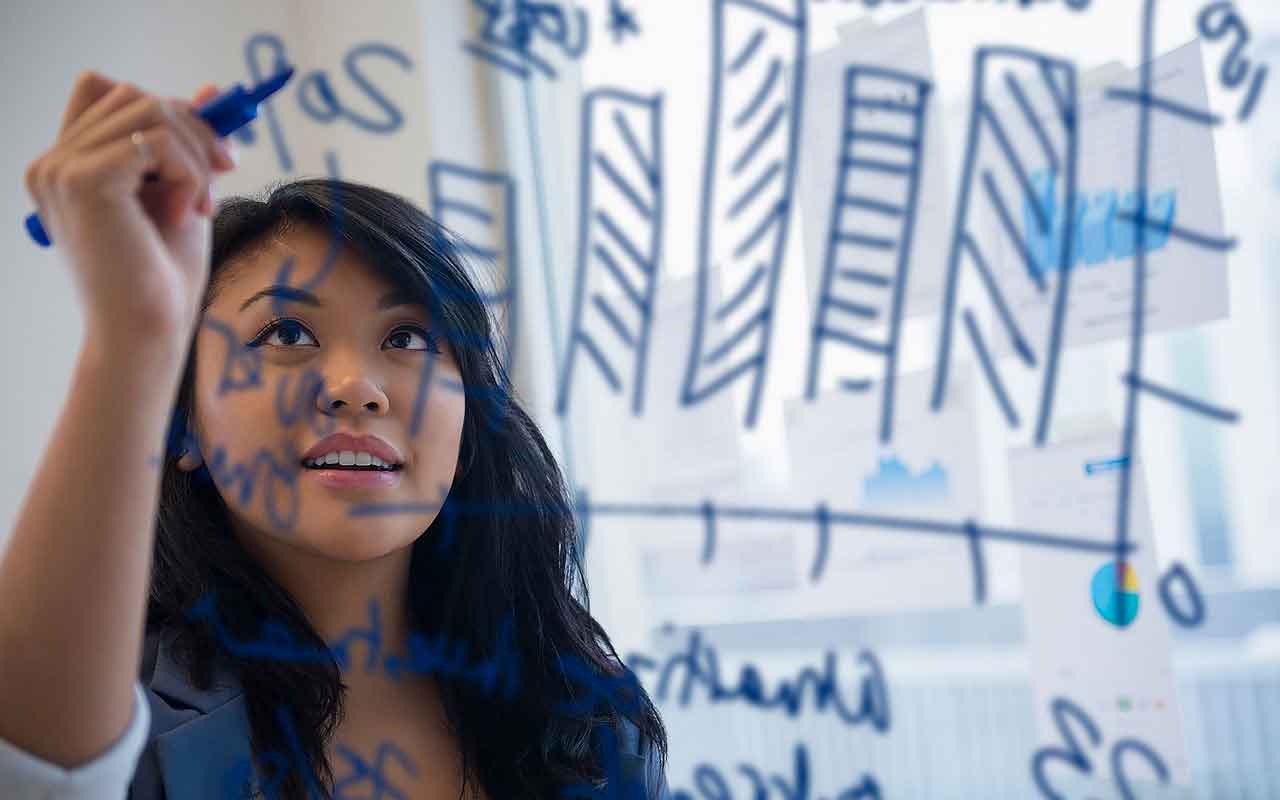
How We Picked the Best Places for Early Retirement
To pinpoint one great retirement destination in each state, we weighed a number of factors:
- Cost of living for retirees in specified major metropolitan and micropolitan statistical areas is provided by the Council for Community and Economic Research (C2ER) through its cost of living index for retired households. The index includes costs of housing, food and groceries, transportation, utilities, health care and miscellaneous expenses. For select cities, where data specifically for retired households was not available, cost of living comes from Sperling's Best Places and includes all residents, as noted.
- Population data, including the percentage of the population that is age 45 to 64, is provided by the U.S. Census Bureau. The figures, unless otherwise noted, represent the populations of major metropolitan and micropolitan statistical areas that often include multiple cities despite being named after just the principal city.
- Household incomes, poverty rates and unemployment rates for 45- to 64-year-olds are also from the U.S. Census Bureau.
- Taxes on retirees, based on Kiplinger's Retiree Tax Map, divides states into five categories: Most Tax Friendly, Tax Friendly, Mixed, Not Tax Friendly and Least Tax Friendly.
- Average health care costs in retirement are from HealthView Services and include Medicare, supplemental insurance, dental insurance and out-of-pocket costs for a 55-year-old couple who are both retired and are expected to live to 87 (husband) and 89 (wife).
- Rankings of each state's economic health are provided by the Mercatus Center at George Mason University and are based on various factors including state governments' revenue sources, debts, budgets and abilities to fund pensions, health-care benefits and other services.
- Rankings of the health of each state's population are from the United Health Foundation and are based on more than 30 factors ranging from residents' bad habits (smoking and excessive drinking) to the quality of hospital and nursing home care available in the state.
Profit and prosper with the best of Kiplinger's advice on investing, taxes, retirement, personal finance and much more. Delivered daily. Enter your email in the box and click Sign Me Up.

Rapacon joined Kiplinger in October 2007 as a reporter with Kiplinger's Personal Finance magazine and became an online editor for Kiplinger.com in June 2010. She previously served as editor of the "Starting Out" column, focusing on personal finance advice for people in their twenties and thirties.
Before joining Kiplinger, Rapacon worked as a senior research associate at b2b publishing house Judy Diamond Associates. She holds a B.A. degree in English from the George Washington University.
-
 Holiday Tax Scams: 'Tis the Season to be Wary
Holiday Tax Scams: 'Tis the Season to be WaryTax Scams Navigating tax tricks of the holiday season may be daunting, but don't let that destroy your festive spirit
-
 Metro by T-Mobile Is Giving Away This Samsung Galaxy A16: Which Plans Are Eligible?
Metro by T-Mobile Is Giving Away This Samsung Galaxy A16: Which Plans Are Eligible?Metro by T-Mobile is offering free Samsung Galaxy A16 phones on eligible plans right now. Here’s how the deal works.
-
 I Drive and Collect Classic Cars: Here’s How I Got Started
I Drive and Collect Classic Cars: Here’s How I Got StartedAre classic cars a hobby or an investment strategy — or both? Either way, the vintage car scene is much cooler and more affordable than you think.
-
 What to Do With Your Tax Refund: 6 Ways to Bring Growth
What to Do With Your Tax Refund: 6 Ways to Bring GrowthUse your 2024 tax refund to boost short-term or long-term financial goals by putting it in one of these six places.
-
 What Does Medicare Not Cover? Eight Things You Should Know
What Does Medicare Not Cover? Eight Things You Should KnowMedicare Part A and Part B leave gaps in your healthcare coverage. But Medicare Advantage has problems, too.
-
 12 Great Places to Retire in the Midwest
12 Great Places to Retire in the MidwestPlaces to live Here are our retirement picks in the 12 midwestern states.
-
 15 Cheapest Small Towns to Live In
15 Cheapest Small Towns to Live InThe cheapest small towns might not be for everyone, but their charms can make them the best places to live for plenty of folks.
-
 15 Reasons You'll Regret an RV in Retirement
15 Reasons You'll Regret an RV in RetirementMaking Your Money Last Here's why you might regret an RV in retirement. RV-savvy retirees talk about the downsides of spending retirement in a motorhome, travel trailer, fifth wheel, or other recreational vehicle.
-
 The 24 Cheapest Places To Retire in the US
The 24 Cheapest Places To Retire in the USWhen you're trying to balance a fixed income with an enjoyable retirement, the cost of living is a crucial factor to consider. Is your city the best?
-
 The Six Best Places to Retire in New England
The Six Best Places to Retire in New Englandplaces to live Thinking about a move to New England for retirement? Here are the best places to land for quality of life, affordability and other criteria.
-
 Estate Planning Checklist: 13 Smart Moves
Estate Planning Checklist: 13 Smart Movesretirement Follow this estate planning checklist for you (and your heirs) to hold on to more of your hard-earned money.
